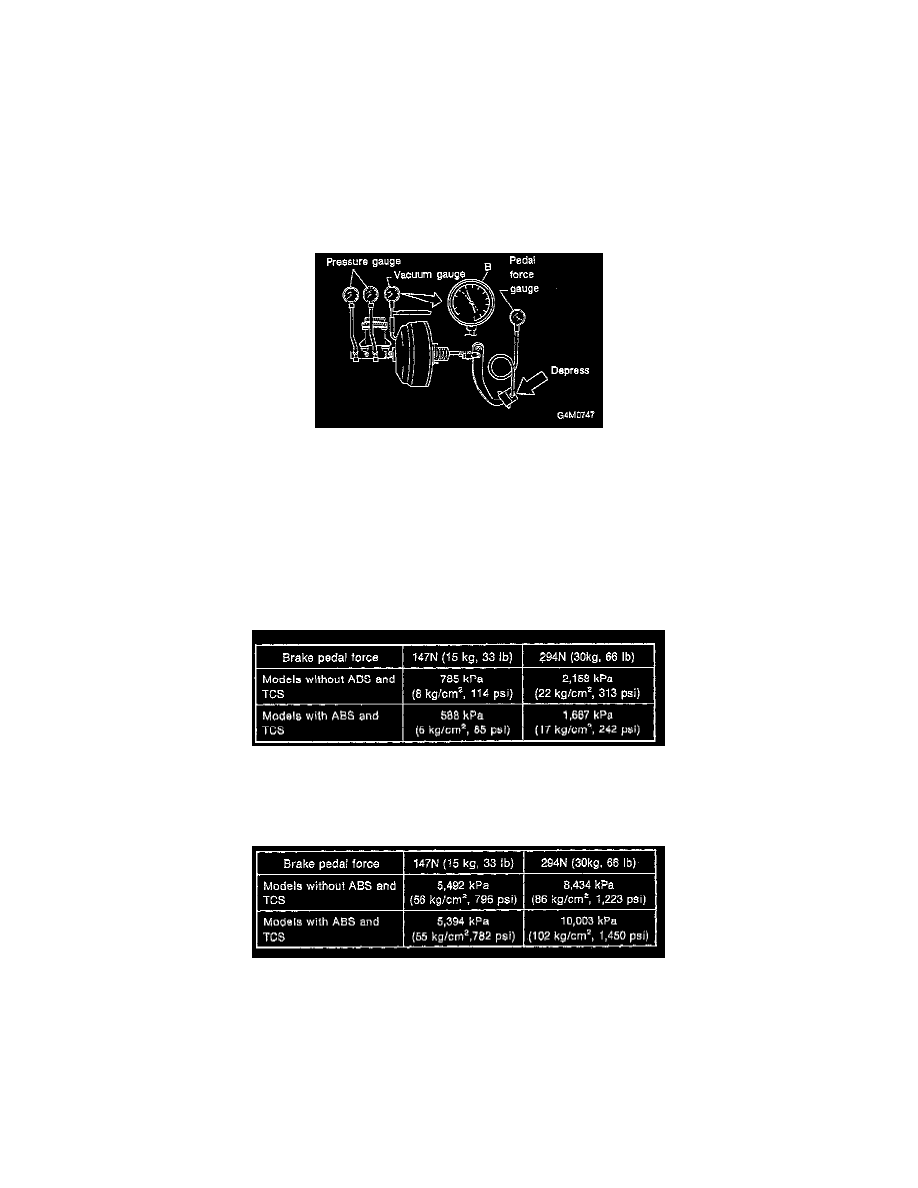Legacy GT LTD Sedan AWD F4-2.5L DOHC (1998)

stopping engine, brake booster is functioning properly.
If defective, the cause may be one of those listed below.
-
Check valve malfunction.
-
Leak from vacuum hose.
-
Leak from the shell jointed portion or stud bolt welded portion.
-
Damaged diaphragm.
-
Leak from valve body seal and bearing portion.
-
Leak from plate and seal assembly portion.
-
Leak from poppet valve assembly portion.
7. Loaded Air Tightness Check
1. Start engine and depress brake pedal with pedal force of 196 N (20 kg, 44 lbs.). Keep engine running until a vacuum of 66.7 kPa (500 mmHg,
19.69 inHg) = point B is indicated on vacuum gauge while the pedal is still depressed.
2) Stop engine and watch vacuum gauge.
If the vacuum drop range is less than 3.3 kPa (25 mm Hg, 0.98 inHg) within 15 seconds after stopping engine, brake booster is
functioning properly.
If defective, refer to "AIR TIGHTNESS CHECK" described above.
8. Lack of Boosting Action Check
Turn off engine, and set the vacuum gauge reading at "0". Then, check the fluid pressure when brake pedal is depressed. The pressure must be
greater than the standard value listed.
9. Boosting Action Check
Set the vacuum gauge reading at 66.7 kPa (500 mm Hg, 19.69 inHg) by running engine. Then, check the fluid pressure when brake pedal is
depressed. The pressure must be Greater than the standard value listed.
D: HANDLING PRECAUTIONS
1. Be careful not to drop brake booster. Brake booster should be discarded if it has been dropped.
2. Use special care when handling operating rod. If excessive force is applied to operation rod, sufficient to cause a change in the angle in excess of ±
3°, it may result in damage to the power piston cylinder.
